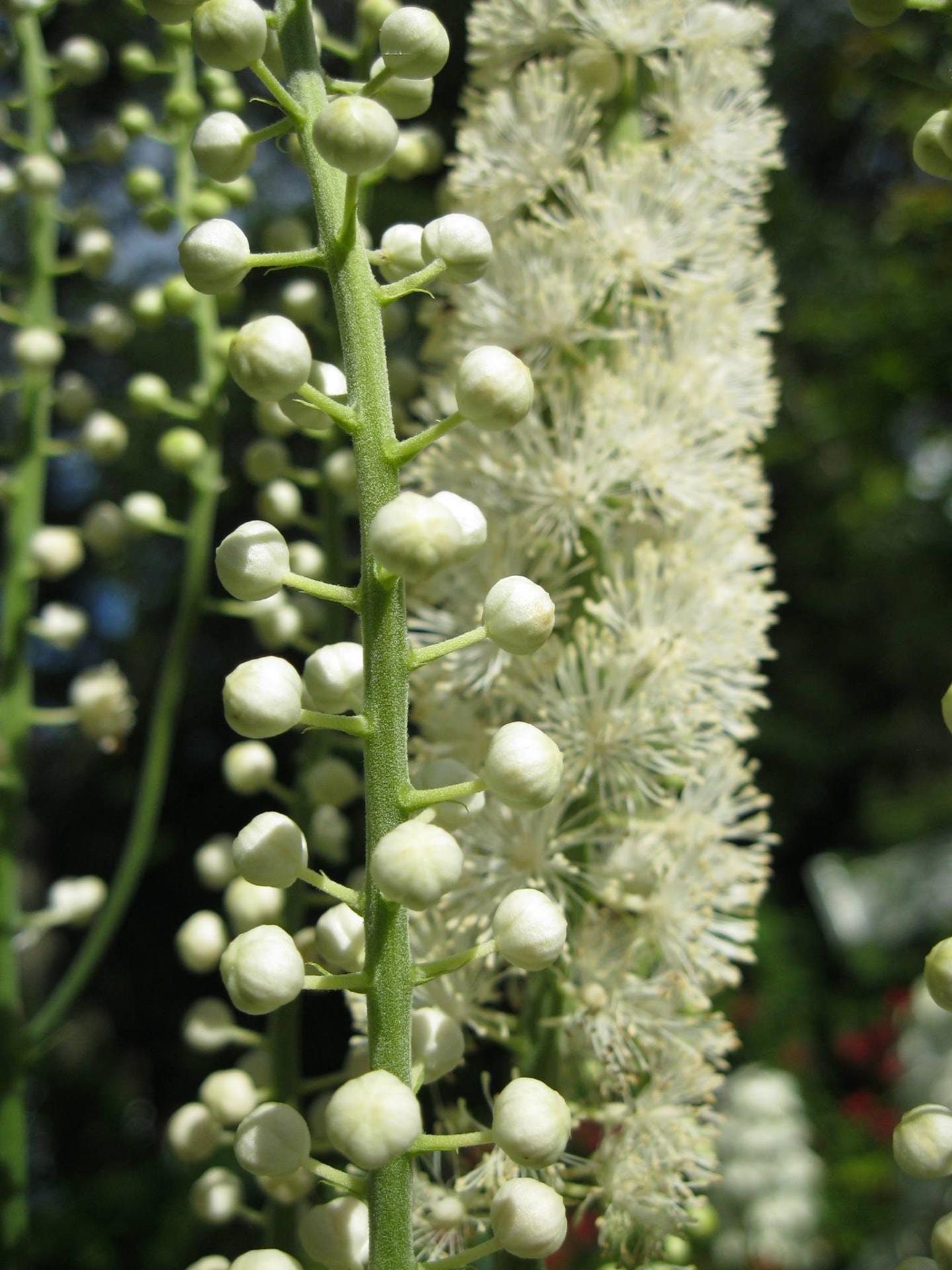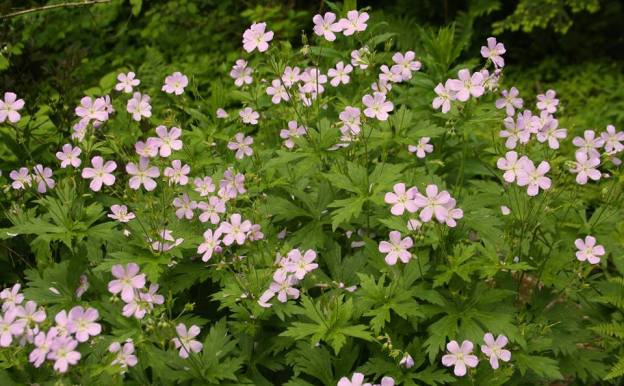by Ellen Sousa
Must be easy to spread yourself around when you’re a plant that produces lots of seeds, right? After all, look at what happens when kids blow the seeds off dandelions! Dandelions pop up everywhere next year! Unfortunately, it’s an ironic fact of gardening life that whatever you are trying to grow takes some effort, whereas the plants that you don’t want (aka “weeds”) just seem to appear without any help from you.

Unlike many native perennials, Black-eyed Susan and Blue Lobelia are quick and easy to grow from seed.
Now, even though regionally native plants (if sited correctly) tend to be easier than exotic (foreign) plants to grow in temperate climates such as New England, that doesn’t mean that they will necessarily establish and spread without some help from us. You can buy established container plants from native plant nurseries, but this gets very expensive, plus many commercially available natives are cultivars – genetically identical clones that contribute little to genetic diversity and resilience of the plant species. Also, native plant cultivars (“nativars”) don’t tend to be as beneficial for pollinators and other wildlife as seed-grown straight ‘wild’ plants.
Here’s where we hands-on, DIY gardeners come in, by helping nature along a little bit!
Grow Local

The beautiful Butterfly Weed (Asclepias tuberosa) is rare in the wild and difficult to find for sale at nurseries, but is easy to grow from seed from existing plants, as long as seeds are exposed to a few months of winter weather.
In an ideal world, our plants would bloom at the right time, be pollinated by the right kind of insect or bird, and then form seeds and fruits that ripen and are carried (again, by bird, insect, or wind) to an appropriate location to germinate when the weather is just right. Some plants do complete the cycle, and if their offspring survive the first year or two, may become established plants that flower, go to seed, and continue the cycle.
In the real world, though, seedlings don’t have a high survival rate. Seeds that are not picked off the stem by hungry birds might, if they have the misfortune to blow into a lawn or roadside ditch, be mown down repeatedly or doused with weedkillers. Some seedlings are crowded right out by vigorous exotic (non-native) plants that make up about 40% of the natural vegetation in New England. Other seeds will just never germinate, no matter what. Such are the laws of life, genetics, and human-controlled landscapes.
So what’s a native plant gardener to do, if they want large quantities of native plants? Why, collect seeds and grow your own, of course! You can help support local plant and wildlife communities and have a beautiful, natural native plant garden by collecting seeds from existing natives and growing and distributing the seedlings around the landscape via friends, family, and fellow citizens.
Winter Seeding — Outdoors!
Many of our northeast US natives will only germinate after being exposed to warm temperatures after several months of cold and wet weather…in other words WINTER. As moisture-filled seeds freeze and thaw through winter and into spring, their outer seed coats break up, signaling seeds to germinate when temperatures warm up again. Locally-evolved plants are smart — their seeds know better than to germinate too early and have their offspring get zapped by the cold.
A straightforward way to grow your own native plants from seed is to collect seeds when they ripen, and sow them in a bed, seed flat, plug tray, or plastic container, protected against foraging critters with a lid, cover, or hardware cloth. Fill containers with a few inches of good seedling mix, make sure there are ventilation and drainage holes top and bottom, water well, and place them somewhere outdoors for the winter. That’s it until spring!

If you sow in open containers or trays, be sure to cover them with hardware cloth to prevent critters from foraging your seeds.
When warm temperatures arrive in spring and seeds begin to germinate, open the lids on warm days and keep containers moist (bottom watering is best).

Seedlings will be tiny, but hardy! Unlike seedlings grown indoors, winter sown seedlings need no hardening off after lids have stayed open for several days and nights.
By late spring, when seedling roots reach the bottom of the container, you can transplant individual seedlings either into larger pots to grow on, or directly into prepared soil in the garden. Either way, keep seedlings well watered for the first season.
Learn Your Seed’s Needs
Before sowing your seeds, do some homework to learn about any special requirements for germination. Native Milkweed (Asclepias) and Bee Balm (Monarda) seeds require at least one winter outdoors before they will sprout. Baneberry (Actaea), Trillium and Solomon’s Seal (Polygonatum) need multiple cycles of warm/cold weather, sometimes taking two years for seeds to germinate.
The seeds of Wild Cranesbill (Geranium maculatum) are hydrophilic and should not be allowed to dry out in storage. Seeds from Wild Senna, Wild Blue Lupine and Goat’s Rue germinate best with some scarification/scraping of the seeds to loosen their hard seed coats.

At Garden in the Woods, Trilliums and Squirrel Corn (Dicentra canadensis) are sown in raised nursery beds where seeds can sit through several winters and grow until plants reach flowering stage. At that time, the best selections are transplanted to the garden or potted up for sale in the nursery.
Quickest Native Perennials from Seed
The following eastern native plants usually germinate easily without any special treatment (cold exposure or scarification) in New England:
- Agastache
- Aster
- Lobelia
- Helianthus
- Heliopsis
- Oenothera
- Rudbeckia
Native Seeds that Require One Winter Before Germination
The following seeds need to complete a full seasonal cycle before germination in the northeastern United States:
- Asclepias (seed needs light to germinate, sow seeds on soil surface)
- Aquilegia
- Amsonia
- Aruncus (seed needs light to germinate, sow seeds on soil surface)
- Baptisia (seed needs scarification)
- Chelone
- Chrysogonum*
- Echinacea
- Eupatorium
- Eutrochium
- Geranium*
- Hibiscus (seed needs scarification)
- Iris* (seed needs light to germinate, surface sow)
- Liatris
- Lupinus
- Monarda
- Penstemon (seed needs light to germinate, surface sow)
- Phlox
- Pycnanthemum
- Senna (seed needs scarification)
- Solidago
- Tiarella*
- Verbena (seed needs light to germinate, surface sow)
- Vernonia
- Viola*
- Zizia
*These seeds are hydrophilic and cannot be allowed to dry out. Either sow them immediately after collection, or store the seeds in a refrigerator in a sealed plastic bag with some moistened vermiculite until ready to sow.

Native plants such as Black Cohosh (Actaea racemosa) can take up to two years to germinate from seed. Photo used by permission of Vincent Normand.
Some native plants germinate only after multiple warm/cold cycles of freezing/thawing:
- Actaea**
- Dicentra**
- Filipendula
- Hepatica**
- Polygonatum**
- Sanguinaria**
- Trillium**
**These seeds are also hydrophilic so best sown immediately when they ripen and kept in a shady spot for several seasons.
Propagation Resources
For full details of the germination requirements for American native plants, see:
William Cullina’s book Growing and Propagating Wildflowers of the United States and Canada from New England Wild Flower Society
Maine’s Wild Seed Project provides sowing and germination instructions on their web site, and sells mail-order seeds of Maine-collected native plants.
Prairie Moon Nursery has online germination requirements for the various native seeds that they sell, as well as details of how to propagate native plants from seed.
Miriam Goldberger’s book Taming Wildflowers lists germination requirements for plants along with other tips for growing wild plants from seed.
Local Ecosystem Support
Try to source your seeds from plants that are as locally native as you can find to bolster their populations in your area; however never take more than about 10% of a single wild plant’s seeds for your own use.

New England Aster seeds will readily germinate after a few months of exposure to cold and wet weather and will bloom the first year from seed if seedlings are kept watered.
Saving and growing locally-native plants from seeds is a rewarding and empowering way to help bolster the biodiversity in your neighborhood and provide essential habitat for many forms of declining wildlife. Some native perennials such as Aster, Rudbeckia and Lobelia will even bloom the first year from winter-sown seed. So this fall, collect seeds for next year’s bees and birds!
About the Author
 Ellen Sousa is a Garden Coach, Designer, and Author who runs a small native plant nursery at Turkey Hill Brook Farm in Spencer, MA.
Ellen Sousa is a Garden Coach, Designer, and Author who runs a small native plant nursery at Turkey Hill Brook Farm in Spencer, MA.
***
Each author appearing herein retains original copyright. Right to reproduce or disseminate all material herein, including to Columbia University Library’s CAUSEWAY Project, is otherwise reserved by ELA. Please contact ELA for permission to reprint.
Mention of products is not intended to constitute endorsement. Opinions expressed in this newsletter article do not necessarily represent those of ELA’s directors, staff, or members.





